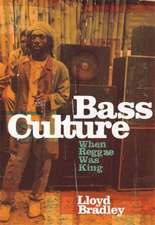Color Stories: Black Women and Colorism in the 21st Century: Intersections of Race, Ethnicity, and Culture
Autor JeffriAnne Wilderen Limba Engleză Hardback – 25 oct 2015 – vârsta până la 17 ani
Preț: 356.01 lei
Preț vechi: 415.26 lei
-14% Nou
Puncte Express: 534
Preț estimativ în valută:
68.13€ • 70.59$ • 56.86£
68.13€ • 70.59$ • 56.86£
Carte tipărită la comandă
Livrare economică 21 martie-04 aprilie
Preluare comenzi: 021 569.72.76
Specificații
ISBN-13: 9781440831096
ISBN-10: 1440831092
Pagini: 216
Dimensiuni: 156 x 235 x 23 mm
Greutate: 0.52 kg
Editura: Bloomsbury Publishing
Colecția Praeger
Seria Intersections of Race, Ethnicity, and Culture
Locul publicării:New York, United States
ISBN-10: 1440831092
Pagini: 216
Dimensiuni: 156 x 235 x 23 mm
Greutate: 0.52 kg
Editura: Bloomsbury Publishing
Colecția Praeger
Seria Intersections of Race, Ethnicity, and Culture
Locul publicării:New York, United States
Caracteristici
Presents a contemporary sociological analysis of the issue of skin-tone prejudice and discrimination and the unique social and cultural implications for black women in today's society
Notă biografică
JeffriAnne Wilder, PhD, is associate professor of sociology at the University of North Florida, Jacksonville, FL.
Cuprins
Series ForewordAcknowledgmentsPrefaceIntroduction The Continuing Significance of Colorism in the 21st CenturyChapter 1 Breaking Silence and Going Public: Shaming, Naming, and Circulating TruthChapter 2 Understanding "Everyday Colorism": Theoretical ConsiderationsChapter 3 The Language, Scripts, and Practices of Everyday ColorismChapter 4 Getting to the Roots of Colorism: Family, School, Dating, and RelationshipsChapter 5Place Matters: The Counter-Narratives of Everyday ColorismConclusion If the Present Looks Like the Past, What Does the Future Look Like?AppendixParticipant Characteristics by Skin Tone, Ethnicity/Home State, and AgeNotesIndex
Recenzii
The author employs a sophisticated theoretical framework to interpret manifestations of colorism past and present and, importantly, puts her findings into dialogue with broader discussions of race and racism. . . . . Summing Up: Highly recommended. Upper-division undergraduates and above.




















